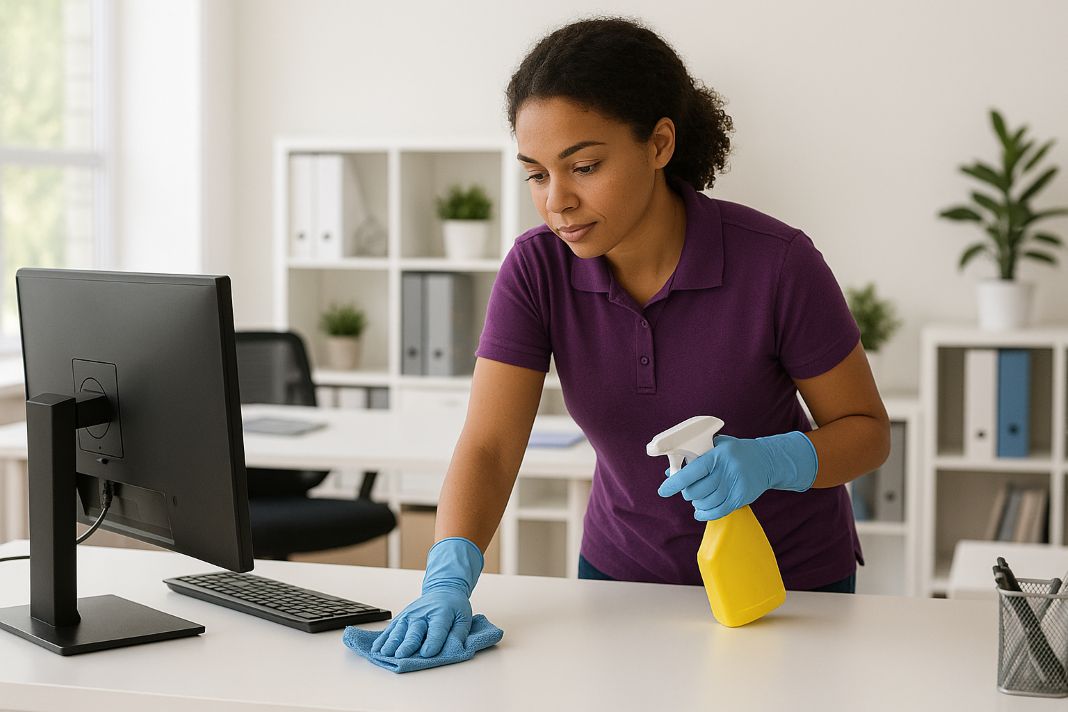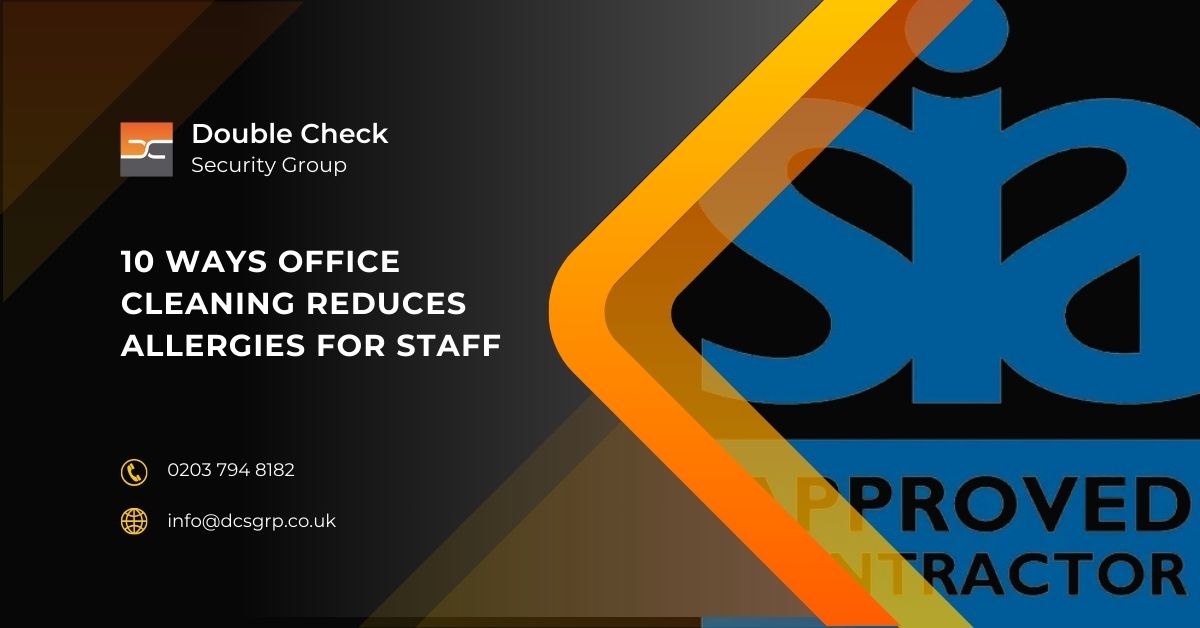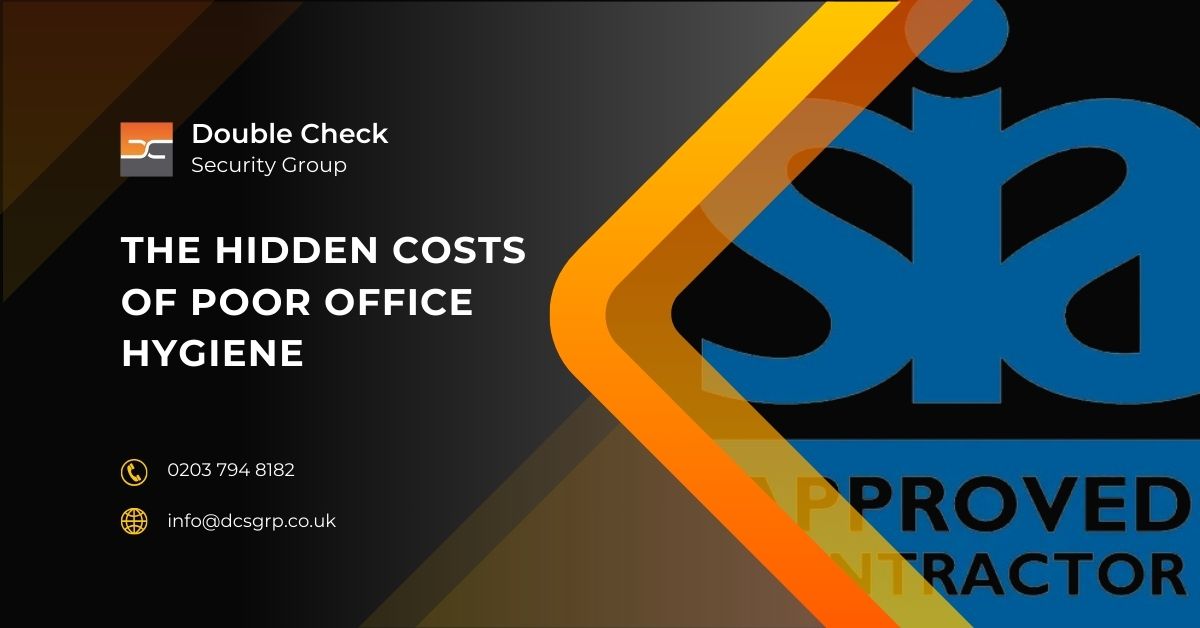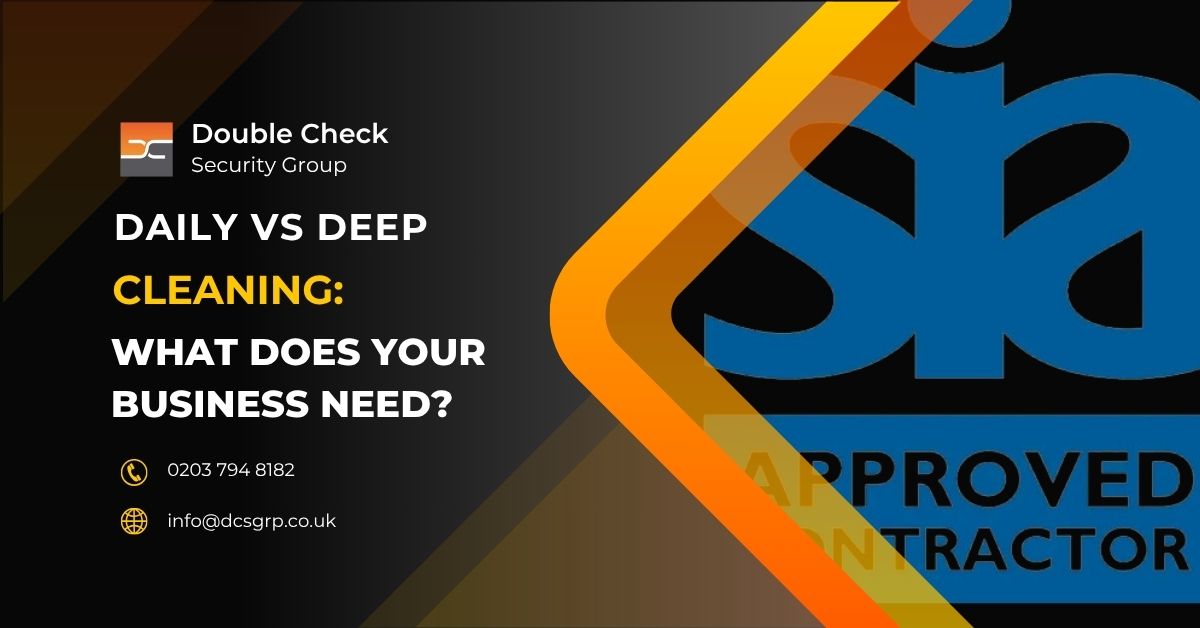How does office cleaning reduce staff allergies?
Clean offices do more than just look professional. They help people feel better. Cleaning routines remove common allergy triggers like dust mites, mould spores, pollen and volatile organic compounds. These can cause sneezing, itchy eyes, headaches or fatigue. When allergen levels drop, staff feel more comfortable and productive. Businesses that commit to allergy aware cleaning often see fewer absences and greater wellbeing across the team. It also lowers occupational health risk linked to long term exposure to indoor allergens. According to the Health and Safety Executive (HSE), a clean and hygienic workplace plays a key role in controlling exposure to health hazards.
1. Use Entry Mats to Stop Pollen and Dust at the Door
Shoes carry in dust and pollen from outside. Mats placed outside and inside entryways act as the first barrier against this. To stay effective, mats should be vacuumed daily and cleaned thoroughly each week. Reception areas with heavy footfall benefit most from this simple step.
2. Dust with Microfibre Cloths to Prevent Irritant Build Up
Standard dusters can stir up fine particles instead of removing them. Microfibre cloths work differently — they lock in dust and dander. Use them on desks, switches and shelves each day. Do not forget places like skirting boards and the tops of doors. Reducing surface dust helps improve air quality.
Pro Tip: Steam cleaning soft furnishings quarterly can prevent invisible allergen build-up in shared spaces.
Breathe Easier at Work
Keep your staff healthy with allergy-safe cleaning solutions tailored to your business.
3. Vacuum Carpets with HEPA Filters to Trap Allergens
Allergens often collect in carpets. HEPA filter vacuums remove the smallest particles like dust mites and mould spores without blowing them back into the air. Clean under desks and in shared areas every day. Change vacuum bags regularly to keep the system efficient. When neglected, carpets can become major allergen reservoirs.
4. Clean Air Vents and Ducts to Remove Hidden Mould Spores
HVAC systems distribute air and sometimes allergens. Mould and dust can build up inside ducts and vents. Clean vents often and have a professional inspect ductwork at least once a year. Replace filters on schedule to maintain clean airflow. Certified HVAC contractors can ensure systems comply with British Standards such as BS EN 15780 for ventilation hygiene.
5. Wipe Down Desks and Devices to Clear Fine Dust and Dander
Workspaces pick up skin flakes, fabric fibres and pet dander throughout the day. Use alcohol free wipes on phones, monitors and keyboards. Daily desk wipes reduce exposure to these particles. In hotdesking offices, shared equipment can spread allergens quickly. Encouraging staff to wipe down areas before and after use supports cleaner conditions. A workspace hygiene policy can help make this a habit.
6. Steam Clean Upholstery to Get Rid of Embedded Allergens
Soft furniture traps dust deep in fabric fibres. Steam cleaning lifts out embedded allergens without using chemicals. Clean chairs, sofas and panels in meeting rooms and lounge areas regularly either monthly or quarterly, depending on use. Ignoring upholstery can undo the benefits of cleaning other surfaces.
7. Sanitise Kitchen Areas to Control Mould and Bacteria
Staff kitchens are full of allergy risks. Damp sponges, fridge spills and leftover food can all cause problems. Clean daily and pay attention to fridge seals, handles and sinks. Disinfecting shared appliances limits the spread of bacteria and mould. A hygienic kitchen helps protect those with sensitivities.
8. Maintain Washrooms to Prevent Airborne Irritants
Toilets and washrooms are often cleaned for appearance but looks are not everything. Mould, ammonia odours and heavy fragrances can linger in the air. Use fragrance free cleaners and scrub touchpoints daily. Good airflow is essential to stop moisture from building up. Washrooms left unchecked can become allergy hotspots.
Pro Tip: Fragrance free does not mean ineffective, always choose COSHH-approved alternatives.
9. Switch to Allergy Safe, Fragrance Free Cleaning Products
Scented sprays and strong chemicals can irritate breathing and cause headaches. Switch to COSHH approved fragrance free options with low volatile organic compound levels. Read labels carefully and train cleaning staff on safer choices. Unlike fragranced products that contain irritants like limonene, allergy safe products reduce risk and maintain high hygiene standards. Following UK workplace hygiene standards, such as those outlined by the Health and Safety Executive (HSE), ensures cleaning products meet required safety and compliance expectations.
10. Schedule Daytime Cleaning to Minimise Midday Allergen Build Up
Cleaning after hours is helpful, but allergens still build up during the day. A lunchtime refresh can remove crumbs, spills and dust before they circulate. Meeting rooms, kitchenettes and quiet zones benefit most. Daytime cleaning shows staff their comfort is being prioritised. Regular office air quality assessment can also identify high risk zones.
Regular Cleaning Means Healthier, Happier Teams
Allergy aware office cleaning helps staff feel better and stay focused. The benefits are clear:
-
Fewer complaints about sneezing, fatigue and irritation
-
Reduced sick days from allergy related illness
-
Improved air quality across shared spaces
-
Greater comfort in hotdesking and high traffic zones
-
Staff feel more valued and supported by workplace hygiene
Why this matters: Simple habits like keeping desks tidy, reporting issues early and using allergy friendly products help keep workplaces safer for everyone.
Protect Your Workplace Health
Not sure if your current cleaning meets standards? Let us inspect and help you fix it.













